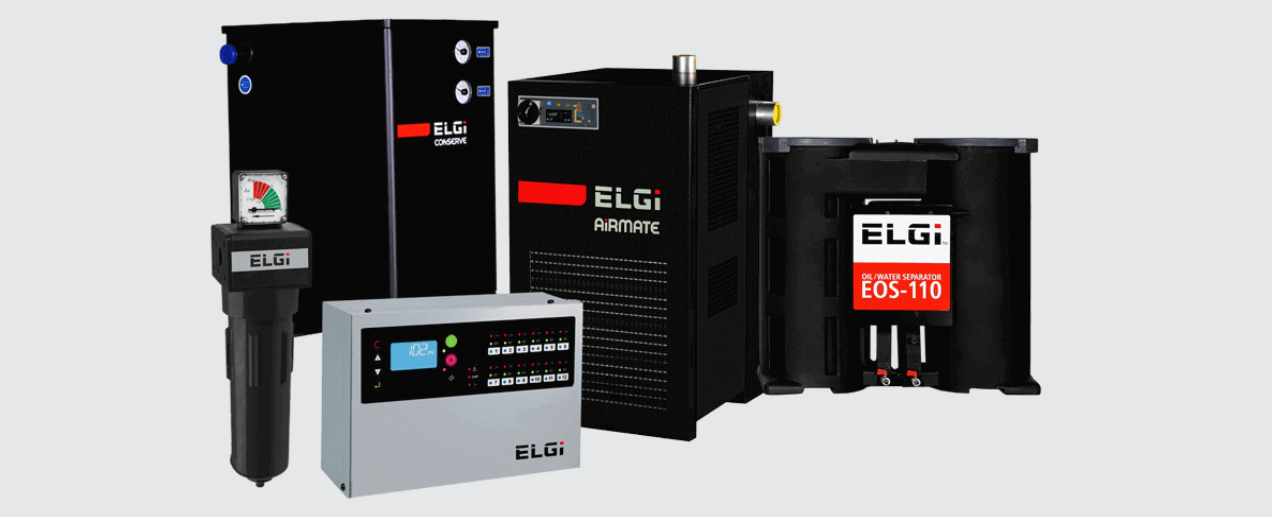Plant Managers Guide to Air Compressor Accessories

As a plant manager, there are many factors to consider when deciding how and what to invest your working capital on. When making the decision to research a new air compressor system, you may not understand the technical aspects of a quote. If this is the case, this guide is for you.
A few years ago, I found a dealership that had a good price for the exact vehicle I wanted. As I was wrapping up the financing, the dealer showed me the final price, and I was shocked. The price of the car was exactly as negotiated, but there was a lengthy list of “add-ons” that drove the final price up including things like paint sealant, fabric protection, window tint, nitrogen filled tires, door edge protectors, upgraded floor mats, mud flaps, trunk trays, and even color changing valve stem covers. None of these helped the car get from point A-Z but dramatically increased the “out the door” cost of my car.
When purchasing an air compressor system for your plant, you may feel the way I did at the dealership when the air compressor salesperson shows you a list of add- on components that you weren’t expecting. That leaves us with the question: are these add-ons worth your investment?
Beyond the actual machine that compresses the air, there are several components worth your consideration, though they don’t help the compressor compress, they are vital to your plant. Air dryers, as their name suggests, dry the compressed air before it gets into your piping system. You might be wondering why you would need to “dry” air that simply compresses ambient air. Here’s why:
Air compressors are excellent at generating three things; compressed air, heat, and water. Ambient air has humidity and once compressed, turns directly into liquid water - lots of it. In the summertime, a 100-horsepower compressor will generate roughly four gallons of water every hour! That much water will create havoc in whatever process your plant is using the compressed air for. Thankfully, a properly sized air dryer will take that moisture out of your compressor air. The filter quoted with your air dryer is also critical to take out the particles that are in the air. If you undersize them, they will cause your operating costs to rise by creating a pressure drop that will make your compressor work harder.
Once those dryers and filters have done their job and taken the water out of compressed air lines, it has to safely be deposited somewhere, this is because it is not pure water. Instead, it is more of a sludge since it has picke
This leads us to another essential add-on component; the “oil water separator.” Much like the air dryer and filter, the name gives away its function. This oil water separator will physically separate the oil and the water that you’ve taken out of the compressed air. This separation process will clean the water well enough that you can now drain it down the sanitary sewer. This is vital in order to be in compliance with EPA guidelines.
Now what about the line item entitled “air receiver?” Is it needed? I give that a resounding yes and like sub sandwiches, the bigger the better. The air receiver is a giant tank that stores compressed air. The rule of thumb is that you need a minimum of three to five gallons of receiver tank for every CFM your air compressor produces. A 100 HP Compressor generates roughly 500 CFM of air, meaning it would need a 1500 – 2500-gallon tank. That’s about the size of a small submarine so it is important to be mindful that you will need to find the floor space for it. Fortunately, it can be put outside, doesn’t require maintenance, will help take out water, and smooth out the pressure fluctuations in your plant.
You won’t regret investing in these components for your compressed air system, even if they don’t change colors like your valve stems. If you have any remaining concerns, experts at ELGi are available to answer your questions. Reach out to us with any questions! We would be more than happy to help.
CONTACT US EXPLORE OUR AIR COMPRESSOR ACCESSORIES
